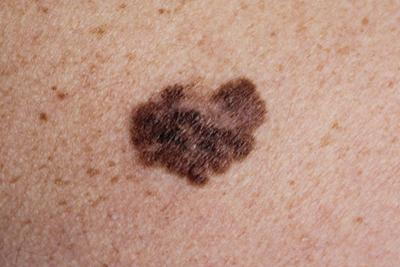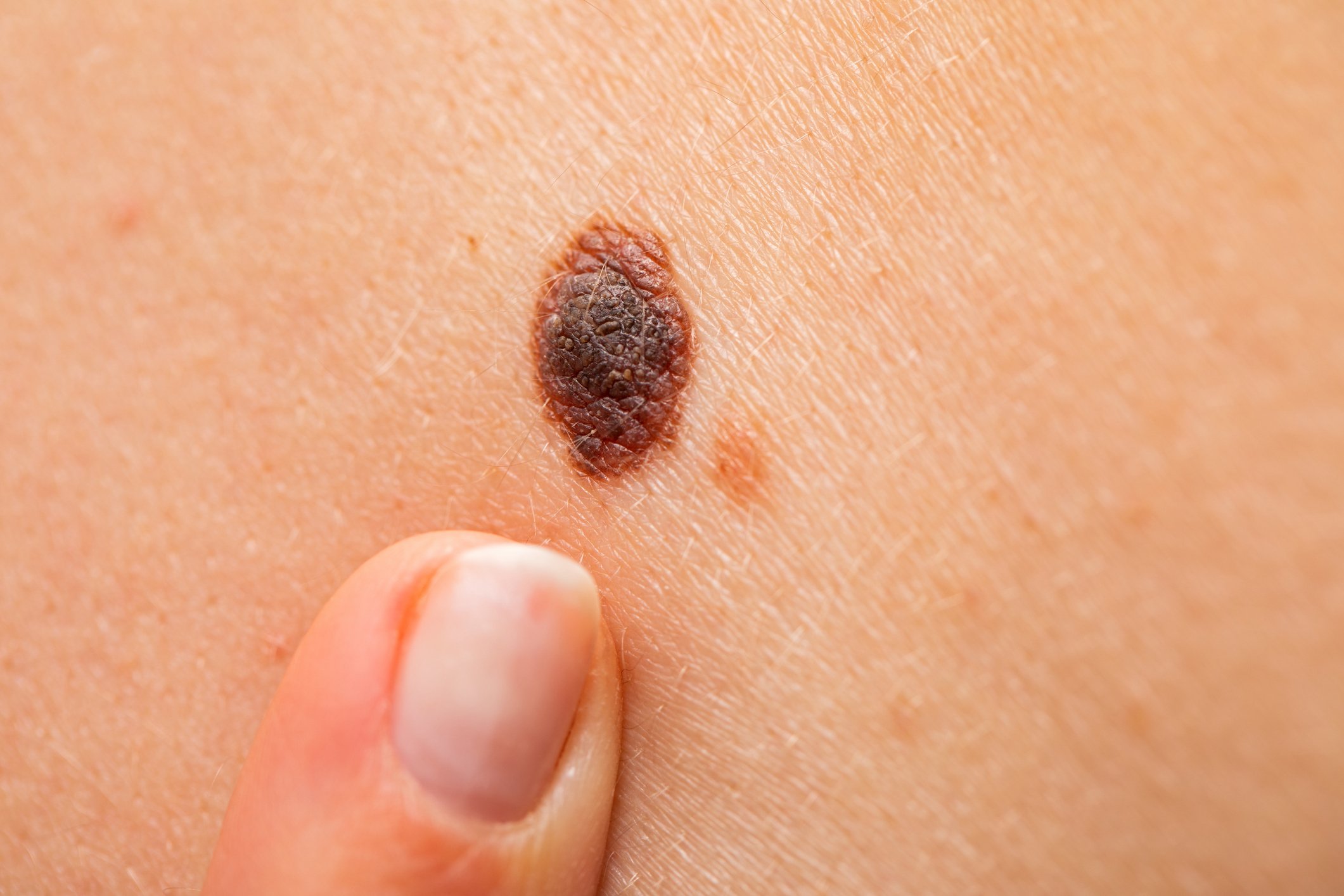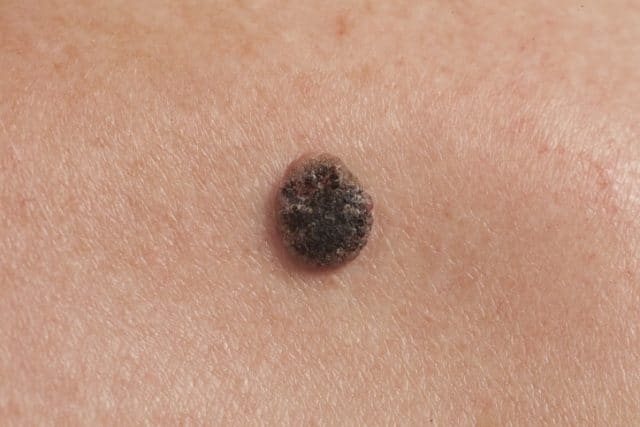When it comes to your health, paying attention to your body’s subtle signals can make all the difference. One area that often goes unnoticed is changes in your skin, particularly the appearance of moles. While most moles are harmless, certain changes can signal more serious issues, including skin cancer.
In this article, we’ll discuss why monitoring your skin is so important, how to recognize potential warning signs, and what steps you can take to protect your health.
Understanding Moles and Their Purpose
Moles are common skin growths that occur when pigment-producing cells, called melanocytes, cluster together. Most people have between 10 and 40 moles on their body by adulthood, and many of these remain unchanged throughout life.
However, some moles can develop irregularities or change over time. While these changes are often harmless, they can occasionally indicate a more serious condition.

When Should You Be Concerned?
There are several key changes to watch for when it comes to moles. Medical professionals often use the “ABCDE” rule to help identify potential warning signs:
- A for Asymmetry: If one half of the mole does not match the other, it could be a cause for concern.
- B for Border: Irregular, blurred, or jagged edges may indicate an issue.
- C for Color: A mole that changes in color, becomes patchy, or includes multiple shades should be examined.
- D for Diameter: Moles larger than 6 millimeters (about the size of a pencil eraser) warrant closer attention, especially if they are growing.
- E for Evolving: Any change in size, shape, color, or symptoms like itching or bleeding should not be ignored.
These signs don’t necessarily mean a mole is cancerous, but they do indicate that further evaluation by a dermatologist is needed.
The Link to Melanoma
One of the most serious concerns related to mole changes is melanoma, a dangerous form of skin cancer. Melanoma develops when the DNA in melanocytes becomes damaged, often due to exposure to ultraviolet (UV) radiation from the sun or tanning beds.
While melanoma accounts for only a small percentage of skin cancer cases, it causes the majority of skin cancer-related deaths. This is because it can spread to other parts of the body if not detected and treated early.

Why Early Detection Matters
The good news is that melanoma is highly treatable when caught early. Regular skin checks can help identify abnormal moles or skin changes before they become a bigger problem.
Doctors recommend performing a monthly self-exam of your skin, paying close attention to areas that receive frequent sun exposure, such as your face, arms, and legs. Don’t forget to check less obvious areas like your scalp, the soles of your feet, and between your toes.
If you notice any changes or new growths, schedule an appointment with a dermatologist. Early detection not only increases the chances of successful treatment but can also prevent the spread of cancer to other parts of the body.

Tips for Protecting Your Skin
Preventing skin damage is one of the best ways to reduce your risk of developing melanoma or other types of skin cancer. Here are some practical tips for keeping your skin healthy:
- Use Sunscreen: Apply a broad-spectrum sunscreen with an SPF of 30 or higher every day, even on cloudy days. Reapply every two hours if you’re outdoors, and immediately after swimming or sweating.
- Wear Protective Clothing: Long-sleeved shirts, wide-brimmed hats, and UV-blocking sunglasses can help shield your skin from harmful rays.
- Avoid Peak Sun Hours: The sun’s rays are strongest between 10 a.m. and 4 p.m. If possible, stay in the shade during these hours.
- Skip Tanning Beds: Artificial UV light can be just as harmful as natural sunlight. Embrace your natural skin tone instead of seeking a tan.
- Perform Regular Skin Checks: Keep an eye on your moles and overall skin health. If you notice any changes, don’t delay seeking medical advice.
The Role of Professional Skin Exams
In addition to self-exams, scheduling regular skin checks with a dermatologist is crucial, especially if you have a higher risk of skin cancer. Factors that increase your risk include:
- A history of sunburns, especially during childhood
- Fair skin, light hair, and light-colored eyes
- A family history of melanoma or other skin cancers
- A large number of moles or atypical (unusual-looking) moles
- Frequent use of tanning beds
Your dermatologist can perform a full-body skin exam and may use tools like a dermatoscope to examine moles in greater detail. If any suspicious areas are identified, a biopsy can confirm whether they are cancerous.

Debunking Myths About Skin Cancer
There are many misconceptions about skin cancer that can lead to a false sense of security. For example:
- Myth: “I have darker skin, so I’m not at risk.”
- Fact: While fair-skinned individuals are at higher risk, anyone can develop skin cancer. People with darker skin tones often develop melanoma in less exposed areas like the palms of their hands or the soles of their feet.
- Myth: “It’s cloudy, so I don’t need sunscreen.”
- Fact: Up to 80% of UV rays can penetrate clouds, making sun protection essential even on overcast days.
- Myth: “Skin cancer only happens to older people.”
- Fact: While the risk increases with age, melanoma is one of the most common cancers in young adults, especially women.
A Message of Hope
The thought of skin cancer can be daunting, but knowledge is power. By staying informed, performing regular skin checks, and taking proactive steps to protect your skin, you can significantly reduce your risk.
Remember, your health is your greatest asset, and small actions today can have a big impact on your future. Whether it’s applying sunscreen, wearing a hat, or scheduling a skin exam, every step you take matters.
If you’ve noticed changes in your moles or have concerns about your skin, don’t wait to seek medical advice. Early detection saves lives, and there’s no better time to prioritize your well-being than right now.
Take charge of your skin health today, and share this article with friends and family to spread awareness about the importance of regular skin checks and sun safety. Together, we can make a difference!
